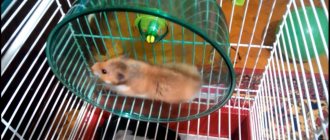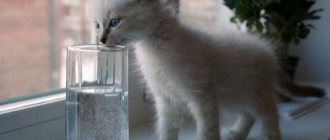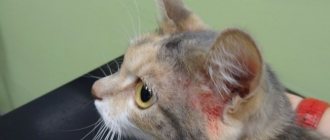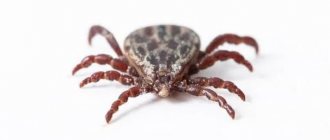- home
- General information
01/25/2019 Sometimes the owner may notice that his hamster squeaks.
The volume and reasons for the squeak vary and depend on the character and breed of the hamster. For example, sounds can be heard extremely rarely from a Syrian hamster, while Djungarians are more temperamental. Caring owners are disturbed by squeaking, snorting and other unusual sounds. Hamsters are usually calm, quiet and unpretentious, and squeaking may indicate discomfort. First of all, you need to find out why the hamster squeaks. There may be several reasons.
How to stop biting
For a biting pet, a number of measures are carried out on how to wean a hamster from biting: you need to choose the right cage, equip a separate corner where the hamster can sharpen its teeth and claws, and provide the animal with peace and calm. The taming process takes several days:
- Before contact, the animal is pacified with a treat. Hamsters love sweets and fresh fruits. While the rodent is eating, a hand is placed in the cage so that the animal gets used to foreign odors. First, the domestic rodent hides and brings food to the corner. You don't need to disturb your pet.
- The next day, the treat is placed in your palm. Hamsters sniff and examine unknown objects - a rodent usually sniffs a finger or palm.
- When the rodent climbs onto your hand, you can pet it. Hamsters are cowards, so it is dangerous to accustom them to your hands without sweets the first time. You must not touch the rodent's head, otherwise you will not be able to avoid a bite.
- On the third day, during feeding, the animal is carefully removed from the cage. Djungarian rodents get along more easily in pairs. For the first few days, a single man or woman hides.
If an animal has bitten for the first time, you can wean the animal from a dangerous habit: to wean the animal from running towards people, it is placed in a separate cage and fed through the cage.
First aid for a child if a hamster bites him until he bleeds
https://www.youtube.com/watch?v=emJzsfIpT80
Some tips on what to do if a hamster bites a child:
- Wash the bitten area with warm water and antibacterial soap.
- Treat the wound with an antiseptic. It is best to use Chlorhexidine or iodine, but if you don’t have them on hand, you can moisten the wound with hydrogen peroxide or brilliant green.
- After treatment, seal the wound with adhesive tape. If your hamster bites your finger, you can put on a special rubber finger guard. If necessary, you should give a painkiller tablet.
Do you need to go to the hospital if a rodent bites your baby until he bleeds? If this was done by a pet who perceived playing with him as aggression and decided to defend himself, then there is no need to worry. Suspicion of an animal's illness is a serious cause for concern. If your hamster has been overly aggressive lately or, conversely, lethargic and eating poorly, this may be a sign of illness.
You need to take the bites of hamsters sold in markets or pet stores very seriously. What should you do if an animal bites a child while you are buying it? You need to go to the hospital immediately. You should take the rodent with you so that the laboratory can check whether it is a carrier of the infection.
In this case, a person always needs first aid.
And it consists of such activities as:
- The bite site must be washed with warm soapy water. It is advisable to use laundry soap, since it, among all other types of soap, helps eliminate infections and bacteria.
- After washing the wound, it should be treated with a medical antiseptic. For this purpose, preparations such as a solution of ode, brilliant green, alcohol or hydrogen peroxide are excellent.
- Then, in order to prevent infectious agents from entering the bite wound, it is best to seal it with a bactericidal adhesive plaster. And if the bite occurs on a finger, it will be convenient to use a rubber fingertip while working around the house.
- If an intense painful syndrome develops, you can take a pharmacological agent with an analgesic effect.
What sounds do rodents make?
As many years of observations of lovers of decorative fluffies show, not all rodents squeak. Among all existing decorative breeds, the Syrian hamster is considered the most peaceful and quiet. A hamster of this breed makes strange sounds only in case of acute pain against the background of a serious illness or blatant rage.
As many livestock breeders note, the Djungarian hamster squeaks to express its feelings. Moreover, it is not clear whether these are feelings of joy or some kind of grief. There are often situations when a hamster cries or screams. It is very difficult for an ordinary amateur breeder to determine the cause of such a reaction.
Sound variations:
The hamster makes strange sounds: why it squeaks, what to do
With the exception of quite rare cases when the hamster squeaks briefly as a sign of greeting, all other reasons for persistent squeaking require understanding and often taking countermeasures.
Most often, hamster squeaking is provoked by:
- stressful situation;
- thirst;
- dreams;
- illness;
- defensive behavior.
In a dream
In a dream, a hamster squeaks not so rarely, which is mainly its reaction to events developing in dreams. At the same time, the animals often wiggle their paws and demonstrate active facial expressions on their faces.
However, sometimes a squeak in a dream can act as a signal indicating an onset of illness.
Learn about keeping, diseases, feeding, breeds, and reproduction of hamsters.
Read also: Why do you need chromakey when shooting?
Stress
Most often, a hamster finds itself in a stressful situation when changing its place of residence. Finding itself in a new environment with unfamiliar surroundings and foreign smells, the animal experiences shock and begins to squeak. To adapt to a new home, a hamster usually needs about a week, during which it is advisable not to disturb him.
Defensive behavior
Sometimes the hamster squeaks desperately, as if trying to protect itself from an enemy, which it imagines to be an unfamiliar person or animal near its cage.
In such a situation, the animal may even behave aggressively towards the new owner.
Important! In such a situation, you should not grab the rodent by the scruff of the neck, shake it or pull its ears - this will only make the situation worse. It is best to leave the hamster alone.
Hamster is thirsty
In the drinking bowl, which must be present in the hamster cage, due to an oversight of the owners, water may run out. And then the animal has no choice but to draw the attention of the owners to the problem with an excited squeak. And the sooner the animal’s owners establish the cause of the squeaking, the sooner it will stop.
Got sick
The most serious reason for an animal’s constant squeaking is some kind of disease. This happens against the background of the animal’s sluggish movements, apathy, loss of appetite and obvious drowsiness.
The hamster stops taking care of his appearance, and his fur looks unkempt. In this situation, the intervention of a veterinarian is required.
Did you know? If the running wheel in which the hamster has fun did not spin in one place, but rolled along the road, then this animal would be able to cover up to 10 kilometers during the night.
How do guinea pigs sleep?
In a familiar environment, the animal falls asleep gradually. First he sits on his hind legs, gradually relaxes and lies down on the bedding. The animal sleeps in a variety of positions:
- on the stomach;
- on the side;
- on the back.
The animal tucks its paws or stretches them along the body. Sometimes in a dream a rodent begins to quickly move its legs, as if escaping from being chased. The owner can bring his palm to the muzzle so that the native smell calms the pet.
The unnatural posture of the animal during sleep should cause concern. Sometimes guinea pigs resolutely refuse to sleep and simply sit with their eyes open. Such behavior is a reason to contact a veterinarian.
Sleep duration
During the day, the pig sleeps for a total of 4–6 hours. Such short sleep is due to instincts developed over centuries. In the wild, animals are constantly on the alert to repel a predator's attack in time. Finding food also takes a long time because rodents chew constantly.
Pets find it difficult to adapt to new conditions. An animal may not sleep for several days if it changes its place of residence or owner. The rodent tries to find shelter in the house, bites, and refuses food. The owners will have to be patient. Add hay and change water without sudden movements.
Sleep phases
The daily rest is divided into several parts. A single immersion in deep sleep lasts 8–15 minutes. The pig does not fall asleep for a longer time, so as not to overlook the danger.
During the day, the animal finds a lot of things to do: chew pellets, eat grass, drink water. But the bulk of the time is spent preparing for bed, finding peace and serenity.
Day or night
Guinea pigs are diurnal in nature. They do not change their habits even at home. During daylight hours, animals find a lot of things to do: eat, drink, clean, play, communicate with the owner. Daytime sleep breaks occur infrequently.
At night it is time to rest. Rodents go to bed with their owners. However, the feeling of hunger periodically overtakes the animal, and it has to wake up. Nighttime feeding in pigs is quite noisy.
Pets sometimes confuse their daily routine and become nocturnal. In this case, you should change the rodent's feeding schedule. Food is given out at strictly established hours. Disorderly feeding disrupts the routine and affects the pig's calmness. It is allowed to place pieces of fruit or vegetables in the cage during the day.
Guinea pigs are conservative in their habits. They easily stick to a routine once established. But animals sleep very lightly, so at night they need to create darkness and silence.
Decoding other sounds
Sometimes hamsters snort. If the sounds are short and repetitive, it means that dust or small particles of food have entered the animal’s nose. Usually he quickly manages to get rid of them.
But if the hamster began to hiss or sniffle, then this is a cause for concern - he could have caught a cold from dampness or a draft. If your pet does not stop sniffling and choking, you should urgently take him to the doctor.
Sometimes you can notice that the hamster is crying. Then the owner should analyze his behavior: he probably disturbed the animal at the wrong time, or upset him in some way. If you continue to pester, crying may give way to angry screams.
Baby rodents often cry, frightened by an unusual environment. But if no one has offended the hamster, and he makes plaintive, drawn-out sounds, then something definitely hurts him. Go to the vet immediately.
Please note: hamsters cry without tears. If tears are visible in the rodent's eyes or face, it most likely has a respiratory infection.
Excessive attention from owners
Special attention, overprotection will harm not only human relationships, but can also cause cannibalism in female hamsters. Since this rodent is a solitary animal, and after the birth of the cubs the female needs a secluded and calm environment even more, excessive care for these animals will only harm. Do not pick up the hamster and go into the cage less often. Let your family see less of you.
Alien smells repel the hamster's mother. Sensing someone else's scent, he does not identify the puppies as his own creatures and, as a result, abandons them and destroys them. Do not touch the hamster family for a week or two after the babies are born!
You need to prepare in advance for the new offspring of furry rodents. If you find any hamster accessories while cleaning the cage, do not touch them. This is a strategic supply of food, which unpleasantly traumatizes the animal’s psyche if it is lost, even to the point of irregular decline in a pregnant female. Only spoiled food should be thrown away to avoid the growth of putrefactive bacteria, unpleasant odors and poisoning.
For self-organization of the nest, it is recommended to put several paper napkins. Your task is to fill the bowl with clean drinking water and put the food in the feeder on time. This is the only thing the rodent needs from its owner at this time. Nature will do the rest.
How do chinchillas communicate with each other?
Living in large flocks, chinchillas communicate through sounds and signals. Different tones and volumes are a call for a meal, inform of a perceived danger, or indicate readiness for reproduction.
Chinchillas often make sounds with the following meanings:
- Intimidation. Hissing and quacking sounds are used, accompanied by gnashing of teeth. This is how the male scares the rival away from his partner or drives him away from the territory.
- Invitation. A melodious squeak occurs when the chinchilla scampers around the room and wants a friend to join her.
- Mutual understanding, care or love. Expressed by soft melodious trills and cooing.
- Irritation. The reason is an attempt on food, rest or sleep. Sounds like a hoot.
- Danger signal. Intermittent barking indicates a threat from a person (at a doctor’s appointment or while getting used to a new owner), or the approach of a predator.
- Rage/anger. The chinchilla's cry resembles laughter.
Why do hamsters squeak?
The most common sound is the squeak of a hamster, which can vary in volume, from a barely audible squeak to a clearly audible whistle. What causes this behavior?
- the animal is happy to see its owner and greets him. If your pet is cheerful and cheerful, but every time you appear it begins to squeak quietly, rejoice: the fluffy one says hello to you!
- the pet wants to talk about his problem. If the hamster squeaks, but he has not done this before, check the contents of the feeder and drinker, in case he has nothing to eat or drink. Also, by squeaking, a homa may hint that the cage needs to be cleaned;
- cares for the female and sings a song to her. There are very gallant hamsters who perform serenades for their chosen one, squeaking before starting mating.
You can hear the sound of a hamster even when the animal is sleeping. Usually the pet squeaks intermittently and wags its paws. It’s not at all difficult to guess why a hamster squeaks in its sleep. The cute animal is simply dreaming of something very exciting.
Why does a hamster squeak, scream, make strange sounds of screaming and crying?
Sometimes the owner may notice that his hamster is squeaking. The volume and reasons for the squeak vary and depend on the character and breed of the hamster. For example, sounds can be heard extremely rarely from a Syrian hamster, while Djungarians are more temperamental.
Caring owners are disturbed by squeaking, snorting and other unusual sounds. Hamsters are usually calm, quiet and unpretentious, and squeaking may indicate discomfort. First of all, you need to find out why the hamster squeaks. There may be several reasons.
What sounds does a hamster make?
Hamsters are known as quiet animals that do not make sounds for no apparent reason. The exceptions are the rustling of the bedding, the sounds of grinding teeth and during a run from a wheel or running plate. But all the sounds listed do not come from an animal. If the hamster himself makes strange sounds, namely his voice, you need to listen to them, as this may indicate health problems or severe stress. Let's look at each type of sound separately.
A hiss can be heard from a hamster when it believes it is in danger. This is normal during the first few days of his stay at your home. Give him time to get comfortable before picking him up. Usually a couple of days is enough.
A hamster snorts when something gets into its nose. In other words, he sneezes. It is worth paying attention if the sneezing continues constantly, this means that the hamster is most likely sick and you should contact a veterinarian or rodentologist.
Djungarian hamster washes itself
Health problems
Uncomfortable living conditions
Sometimes a squeak means that the hamster is screaming for help. There is no drinking water or food in the cage, it is too hot - all this provokes the pet to declare itself. When thinking about why a lonely Syrian hamster squeaks, check its conditions of detention.
Respiratory diseases
If your pet constantly makes strange sounds - sniffles, whistles, snorts, this indicates difficulty breathing. A rodent can have either a common cold or pneumonia. You should contact your veterinarian.
Strong pain
If a hamster cries in pain, it means it is beyond the pale. A rodent can silently endure even a broken leg. The most common cause of suffering is colic. If the stomach growls and increases in size, and the hamster is worried and whines pitifully, the cause is bloating. Analyze the diet: there are foods that cause fermentation (cabbage).
With strong gas formation, the animal may die.
Discomfort and itching
When infected by a subcutaneous mite, the itching is so severe that the animal squeals in pain and becomes nervous and aggressive. If it is not clear why the Djungarian hamster squeaks and at the same time there are skin problems, you should check your pet for demodicosis.
How many times a day to feed
Khomkis love to eat and almost never refuse a treat. But don't get carried away with excessive feeding. This is fraught with obesity and other problems associated with excess weight.
Video: feeding the Djungarian hamster It is recommended to feed the animals no more than twice a day. Since hamsters are nocturnal, their main meal should be in the evening.
The baby will spend all the energy received from food during wakefulness. In the morning you can give lighter food and in small quantities. It will be ideal if you can feed your pet at the same time. This is very useful for the full functioning of his gastrointestinal tract.
Black hamster - care and maintenance or where to place your pet
Keeping black pets is no different from caring for hamsters of other colors. After all, as we have already discussed above, the black hamster is not a breed, and therefore does not require special care.
Keeping black hamsters
Considering the different sizes of black hamsters, the cages for keeping your pets must be appropriate.
A cage or aquarium made of glass with a length of 100 cm and a height of no more than 40 cm is suitable for a dzhungarik. An aquarium with a height of more than 40 cm and a smaller size will complicate the keeping of a pet since the air circulation in an aquarium where its height exceeds the depth is disrupted.
For a Syrian hamster, a cage measuring at least 40x30x30cm is perfect.
The tray in the cages should be plastic, not wooden, since your pet, no matter what breed it is, is still a rodent. Plastic washes well and there will be no specific smell from a hamster in your apartment
The rodent's cage should be equipped with a house for privacy, a drinking bowl, 2 feeders (separately for dry and wet food), a mineral stone for grinding teeth, a toilet and, most importantly, sports equipment for your pet:
- running wheel,
- driftwood for climbing,
- And so on.
The more “entertainment” there is in your pet’s cage, the more fun your pet’s days will be and the more athletic his figure will be. After all, the most dangerous disease in pets is obesity; this disease subsequently directly affects the life expectancy of a hamster.
It is best to place the cage away from your sleeping place, because hamsters are nocturnal. Direct rays of the sun, drafts and heating devices have adverse effects on the health of pets.
Caring for black pets is quite simple - keep the water bowl, feeders and, of course, the cage itself clean. It is better to wash all hamster accessories with baking soda or tooth powder, since all chemical detergents are contraindicated for rodents. You should not bathe animals, as they may get sick. The best bath for them would be a sand bath.
Treatment
First aid
Change of filler and heat. The room temperature is maintained at about 24 C, but the air should not be dry. Lots of white paper towels are placed in the cage: this is both material for a warm nest and a hypoallergenic environment. If an allergy is suspected, corn filler is also recommended.
To increase immunity, add liquid vitamins for rodents and ascorbic acid to the water, and drink an echinacea decoction. They also give dry nettle and coltsfoot.
The eyes and nose are cleaned of secretions with a damp cotton pad to make it easier for the animal to breathe. Sometimes a hamster sniffles a lot due to the fact that the nostrils are clogged with dried secretions.
Local treatment
For ordinary rhinitis, local treatments are prescribed: the antiviral drug Roncoleukin 50,000 units, 1 drop 2 times a day and Tsipromed (drops with antibiotic) in the same dosage. The Syrian hamster is larger than the Djungarian hamster, but it is equally difficult for both of them to put drops into the nose: during the procedure, the animal constantly twitches and spins. You can simply place a drop of the medicine on the nose and wait for your pet to inhale the liquid. Then he snorts himself.
Systemic treatment
If you suspect a serious infection, you should consult a doctor . But in the absence of a rodent specialist, if a hamster sneezes, every experienced hamster breeder knows what to do at home. Pneumonia is treated with antibiotics. It is not advisable to drink them inside; it can be difficult for an animal with a respiratory infection to swallow. Subcutaneous injections are given with the drug “Baytril 2.5%”. Dose - 0.4 ml (10 mg) per 1 kg of weight. If the hamster weighs 50 g, its dose is 0.02 ml. The drug is administered once a day, in severe cases - 2 times a day, 7-14 days.
Learning how to care for a hamster
When getting a pet, you need to find out as much as possible about its habits and the peculiarities of caring for it. Here are some tips:
- In new conditions, the animal may initially experience stress, so it should not be disturbed.
- When changing bedding, leave a piece for the animal to recognize its smell.
- Periodically do a general cleaning of the cage.
- Do not put several individuals in one cage. Each of them should have their own territory.
- Study the dietary features of hamsters of this breed.
If a Djungarian hamster squeaks and at the same time gnaws the bars of the cage, it means that the owner is not caring for him correctly.
Video: Hamster defensive behavior
Territorial behavior
These animals fiercely defend their territory both from their brethren and from other rodents. If the owner, through thoughtlessness, puts two animals in one cage, there will be trouble. Before a fight, the hamster makes sounds similar to squeaking and hissing, very loud. An angry animal crackles and chirps to intimidate its opponent.
Some species of wild hamsters in South America use “songs” to fight for territory. They make terrible, high-pitched sounds when defending their lands, scaring off invaders and calling for help from their fellow tribesmen.
Decorative pets are far from their wild ancestors, but if they are kept together, the desire to mark boundaries explains why dwarfs squeak.
Hamster squeak
This phenomenon can occur for various reasons. To avoid this, you need to properly care for the animal. Even before purchasing, it is recommended to study the basic principles of care and psychology of a furry. For example:
- In the first days after the purchase, you need to let him recover from stress and get used to the new territory.
- From time to time, do a general cleaning of the cage.
- When replacing the bedding, some of the old one is left so that the animal can smell its scent on it.
- Newborn and pregnant hamsters should not be handled a few days before giving birth.
- Each individual lives in a separate cell.
- Find out what you can feed your pet.
These are just the principles that are most often missed when leaving. And this is the base that everyone should know. Otherwise, questions will arise: why does the hamster scream, chew the cage, etc.
Stress and anxiety
It is very easy to cause stress in a rodent. When you just brought your fluffy home and put him in a cage, he most likely already has one. Associated with moving to a new home. Everything he knew was gone, and now he doesn’t know where he is. There were no familiar smells left. It will take him several days to get used to it, during which time it is better not to touch the animal so as not to aggravate the situation. What to do if your hamster squeaks? In this case, nothing, just let him calm down. Do not disturb him until he crawls out of the house to explore the new cage.
Causes
- Marriage games.
When a male hamster courts a female, he sings a song to her. The most gallant individuals perform a serenade for the female before starting mating.
- Good mood.
There is no need to worry prematurely. Quiet squeaking can mean joy from a pleasant meal or meeting with the owner. If your hamster is cheerful and energetic, but starts squeaking when he sees you, know that this is how he says hello!
- Stress.
The hamster may become agitated, for example, when moving. New surroundings and smells frighten the fluffy, and he may squeal. It usually takes a rodent about a week to get comfortable in a new space. During these days, it is recommended not to disturb the hamster, not to squeeze it, not to pick it up. Over time, the pet will adapt and stop squeaking.
- Defense of the territory.
The cute hamster becomes aggressive when it comes to protecting his territory from any other rodents, including his own brothers. If the owner carelessly places two hamsters in the same cage, a fight will inevitably occur. Before a fight, the hamster makes loud sounds similar to squeaking and hissing, as well as crackling and chirping to scare the enemy.
- Need for help.
If your hamster squeaks when it hasn't done so before, check to see if it has food and water. Perhaps he is tormented by hunger or thirst. An animal may also vocalize if it is hot or its cage is dirty.
Oddly enough, some are sure that hamsters do not drink water, but get all the necessary moisture from juicy food. In fact, hamsters, excluding newborns, need water. You need to place a drinking bowl in the cage where there will always be fresh water. It is necessary to train your pet to use it.
- Dreams.
When a hamster squeaks and twitches in his sleep, he is simply dreaming. He can twitch his limbs, make faces and make sounds.
- Bad feeling.
Illness is a serious reason why a small rodent may squeak. Behavior can tell about it: lethargy, loss of appetite, decreased activity, drowsiness. Appearance also says a lot about the health of the animal. He stops cleaning the fur, which makes it look sloppy.
The first thing you need to do is examine your pet: examine its paws, teeth, and skin. Both squeaking and loud screams can indicate discomfort. For example, a squeak after a fall indicates injury. After all, hamsters do not know how to fall and jump correctly, like cats. Therefore, falling from a height, they often receive serious damage.
After being bitten by a subcutaneous tick, the hamster experiences such acute itching that it screams, squeals, gets angry and nervous. If it is not clear why your pet is squeaking, and there are skin problems, demodicosis should be suspected.
Hamsters may experience discomfort due to poor diet. Sometimes they squeak for this reason. In this case, it is worth reviewing your pet’s diet.
Hamster tongue
When a hamster grooms its body, starting with its back legs, front legs and fur, it means it feels safe and happy. When a hamster yawns and stretches, it means that he feels peaceful.
The hamster stands tall on its hind legs, ears pricked up
This means that he is listening to something that has captured his attention.
Dwarf hamsters have scent glands that are located in the middle of the body, on the stomach. Syrian hamsters have scent glands on their sides, that is, on their thighs. Hamsters often rub against objects, leaving behind their scent. Scent glands are used to mark their territory.
When a hamster squeaks, it means that he is afraid or excited. This usually happens in the first days of being in a new environment. This behavior is normal and stops once the hamster is tamed. Dwarf hamsters squeak when playing, trying to gain dominance, or when they are actually fighting.
This sound means that the hamster is irritated and wants to be left alone. It may also be a warning of an upcoming bite.
Hissing is the loudest sound hamsters make. Basically, this occurs when the body is bent, the mouth is wide open, teeth are visible, and the front legs are raised. This means that the hamster is very upset and scared.
Hamster bites cage bars
? This means that he wants to get your attention. This usually happens in the evening or at night. To stop your hamster from biting the bars of the cage, let him out of the cage to run around. Keep an eye on your hamster to ensure he doesn't get injured. Give him something to chew on. If you place toilet paper or an empty roll of toilet paper between the bars of a cage that your hamster is chewing on, it will play and chew on the toilet paper rather than the bars. It takes time for a hamster to become tame. If your hamster nibbles you, it means he wants to get back into his cage.
Walks and communication
There is another option why Syrian hamsters chew their cage. They do this because they are simply bored. Excess energy leads to the fact that the furry creature is ready to rattle the bars of its prison all night. Replace the cage with a similar one, but larger, buy a large wheel and a walking ball.
In fact, such cases are not at all uncommon. The pet is bored, he lacks communication, of course, he finds entertainment for himself. This is also one of the most common reasons why a hamster chews its cage at night. What to do? You need to communicate with your pet. Take him out of his cage every day, play and talk to him. A good solution would be to acquire a comrade. Then the pets are much less likely to bother their owners; they are busy with each other. By the way, if you don’t want to add hamsters every 3-4 months, then buy only same-sex pets.











